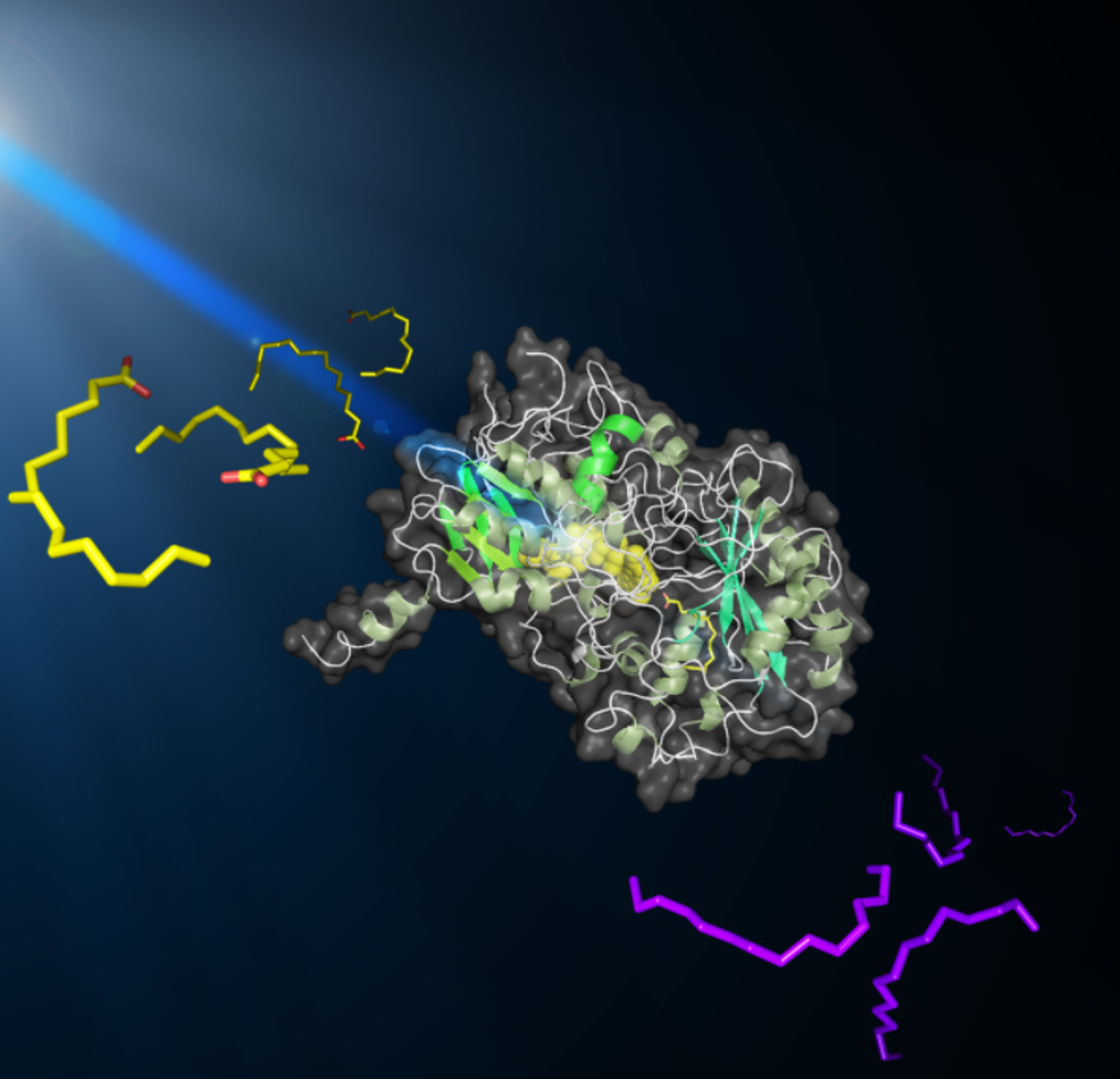Chlorella is unicellular freshwater green algae that are one of the few industrially grown microalgae and a candidate for the production of energy-rich carbonaceous molecules.
Researchers at BIAM have identified a key enzyme for this microalgae's hydrocarbon production by tracking it through its activity, then determining a list of possible candidates by proteomic analysis. The expression of the gene coding for the main candidate enzyme in bacterium E. coli has highlighted the production of hydrocarbons, demonstrating that this enzyme is necessary and sufficient for hydrocarbon synthesis. The characterization of the pure enzyme has revealed that it is capable of breaking a fatty acid into a hydrocarbon molecule and a CO2 molecule, and that this activity is light dependent.
The scientists also showed that a cofactor present in the enzyme makes it possible to capture blue light. They were able to propose a model of the mechanism of the enzyme based on the three-dimensional structure of the enzyme identified in an X-ray diffraction study conducted at the European synchrotron (ESRF), and kinetic absorption spectroscopy studies carried out at the Frédéric-Joliot Institute (I2BC). The fatty acid is located in a hydrophobic tunnel at the end of which is the cofactor. When excited by blue light, the cofactor pulls an electron from the carboxyl group of the fatty acid, causing spontaneous decarboxylation into a hydrocarbon molecule.
From a fundamental standpoint, the discovery of this enzyme called fatty acid photodecarboxylase or FAP is of great interest as to date, only four biocatalysts capable of using light energy (photoenzymes) have been discovered. FAP is at least ten times faster than the best hydrocarbon synthesis enzyme currently known, and it also uses light, which could make it a highly effective biotechnological tool for hydrocarbon synthesis.
This result was the subject of a press release.
